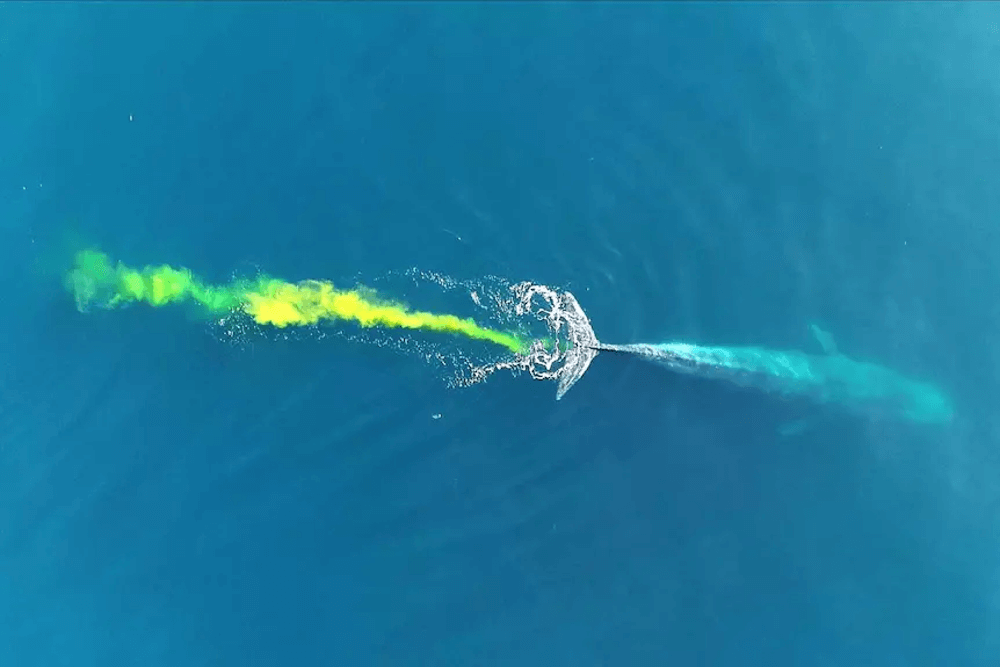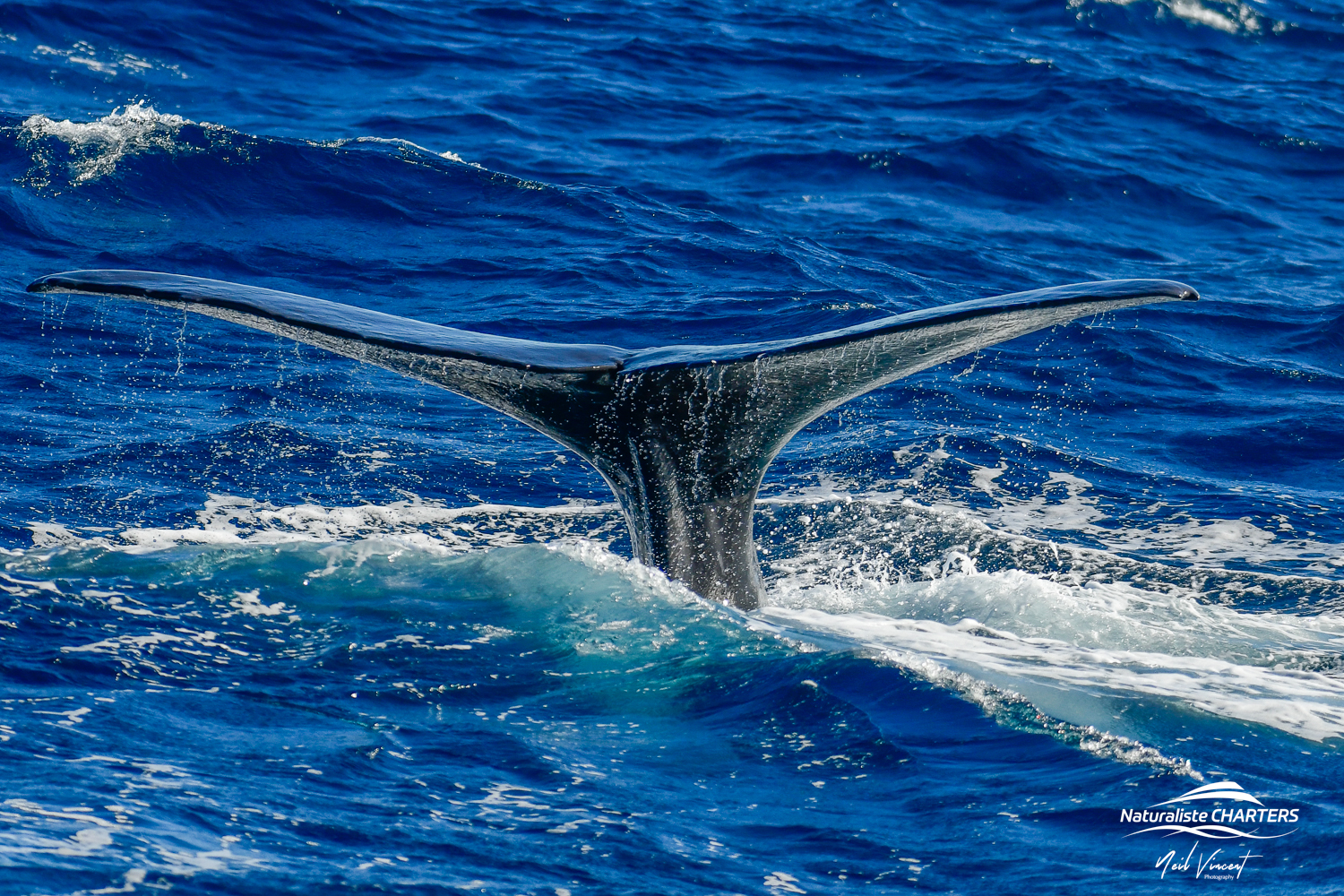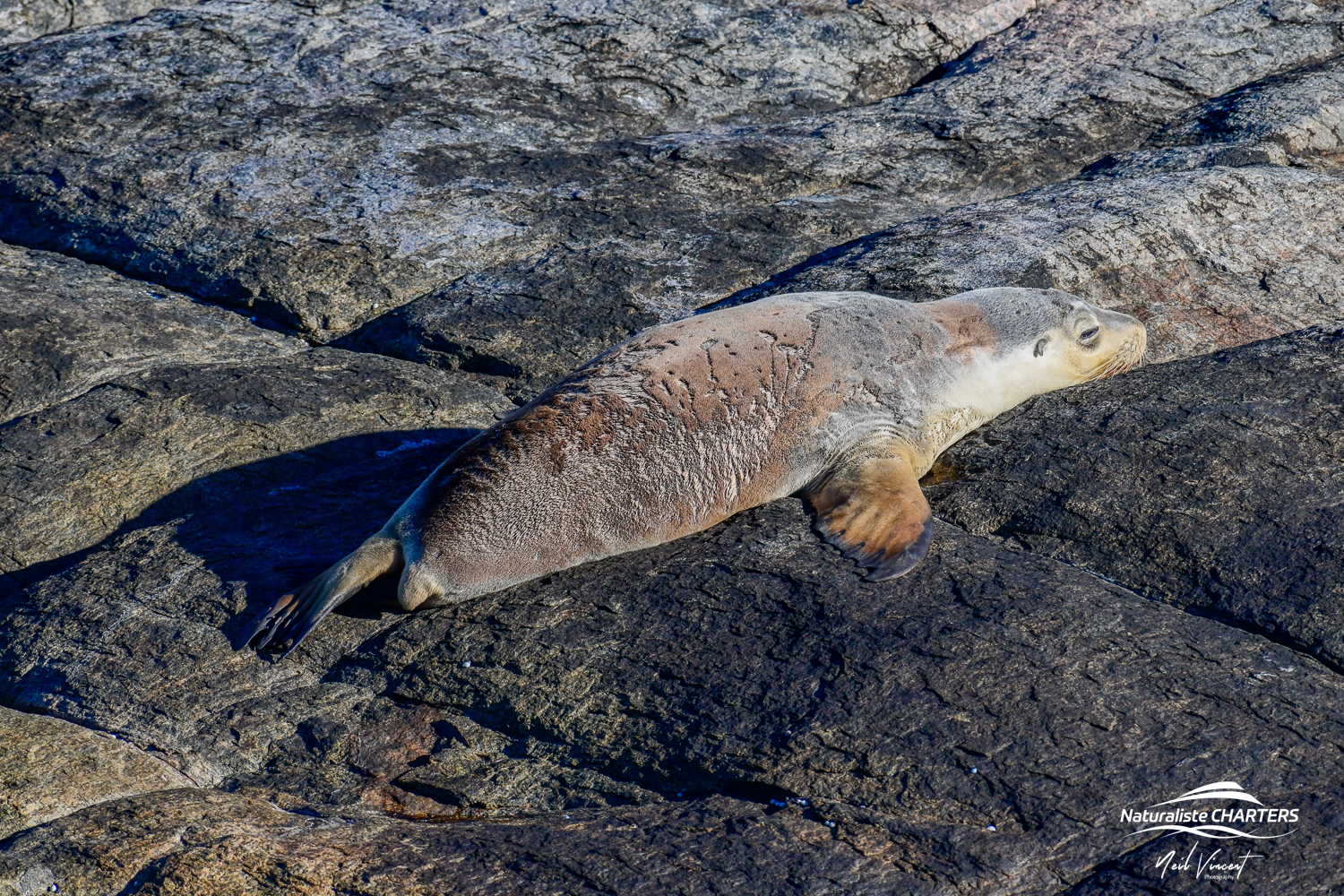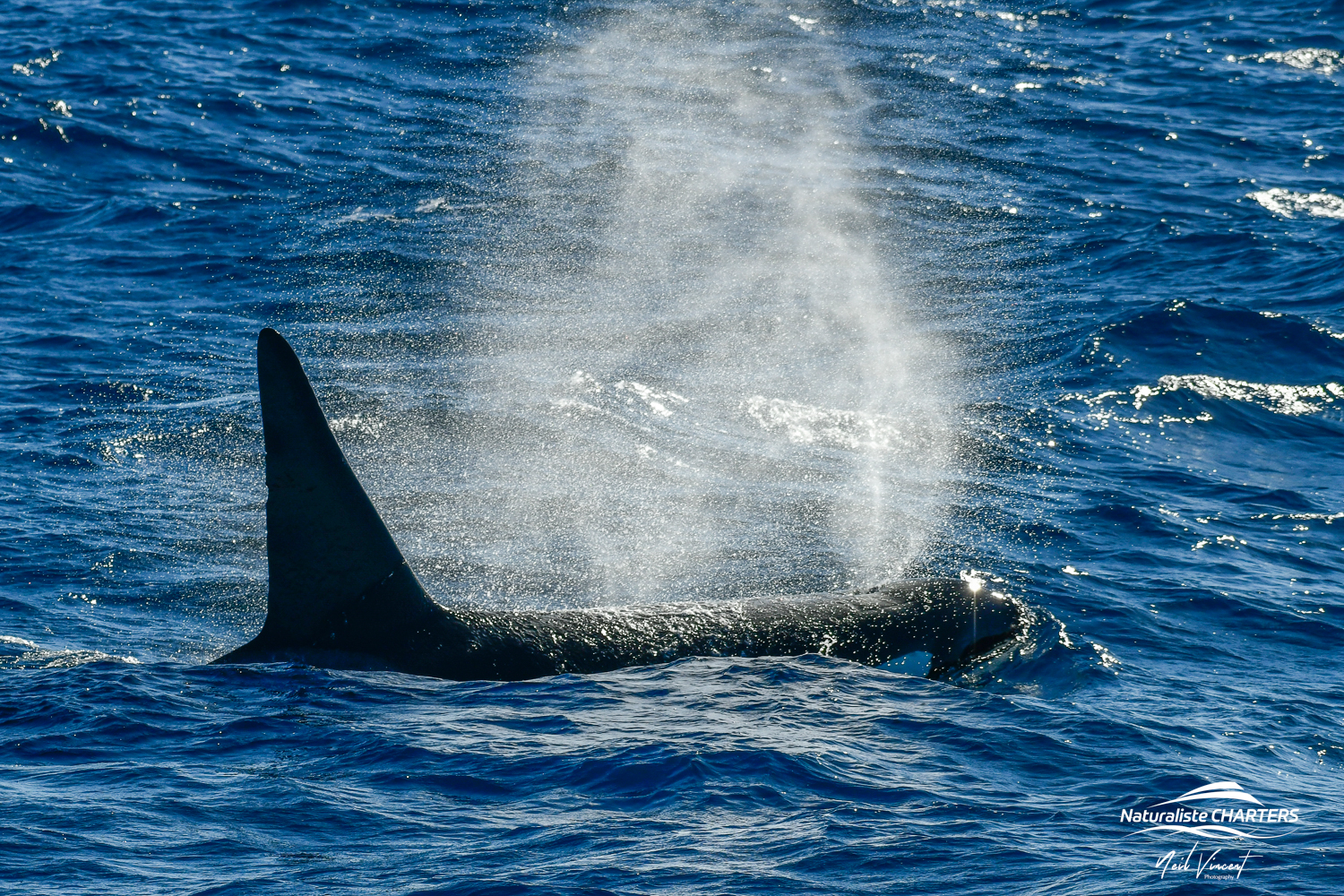Whales: The gentle giants of the sea….they’re also hairy, smelly, have lots of ear wax too! Among these more conspicuous features are the blatantly obvious! The romantic whale song, whale poop and even unicorn whales!
Below are 10 fun facts about whales that you probably didn’t know!
1. Blue Whale Poo
What a better way to start the 10 fun facts then with poop!
Yes, whales DO poop.
The blue whale is the largest of all animals on the planet to ever exist (yes bigger than the dinosaurs). This ginormous gentle whale can easily “offload” 200 litres of poop in a single “visit to the toilet” if you will.
A recent image taken by Ian Wiese in Yallingup while whale watching in Western Australia shows the intensity and volume! The colour will change according to the prey item such as krill or phytoplankton which can range from red/pink to fluro yellow/green. The appearance was described by whale scientist Kurt Jenner to be like “ping pong balls” with a consistency “of breadcrumbs”. He even mentioned it smells much like dog poo!
Whale poo has recently been found to be an essential component to ocean nutrients and overall marine health. The whales consume the krill and plankton and their gut modifies and recycles it into a liquid fertilizer. This poop provides nutrients such as iron for the next lot of krill and plankton!
2. Southern Right Whales testicles weigh 500kgs each
Southern Right Whales are one of the larger baleen whales. They weigh up to 80 tonnes and can reach up to 18 metres long. Although they aren’t the biggest whale to exist they sure hold the record for the largest anatomy! A single SRW testicle can weigh 500kgs!! With two of these testes located inside the male whale’s body, it weighs an extra TONNE! The reason for such large testicles? Well that comes down to the amount of sperm it can produce. The bigger the testes the more sperm produced. So why do they need so much sperm? This comes down to the mating competition. A female will mate with multiple males while she is ovulating. A male can dilute or even “flush” out another’s sperm from the female by using his extra stash!
It has also been discussed that extra sperm can be handy for the males to have. Mating for a whale can be quite the maneuver, with no physical boundaries, the fact they live underwater but still need to breathe and have no hands or teeth to you know, hold on to each other with, the extra sperm can act as a ‘back up’ if one misses or something goes awry.
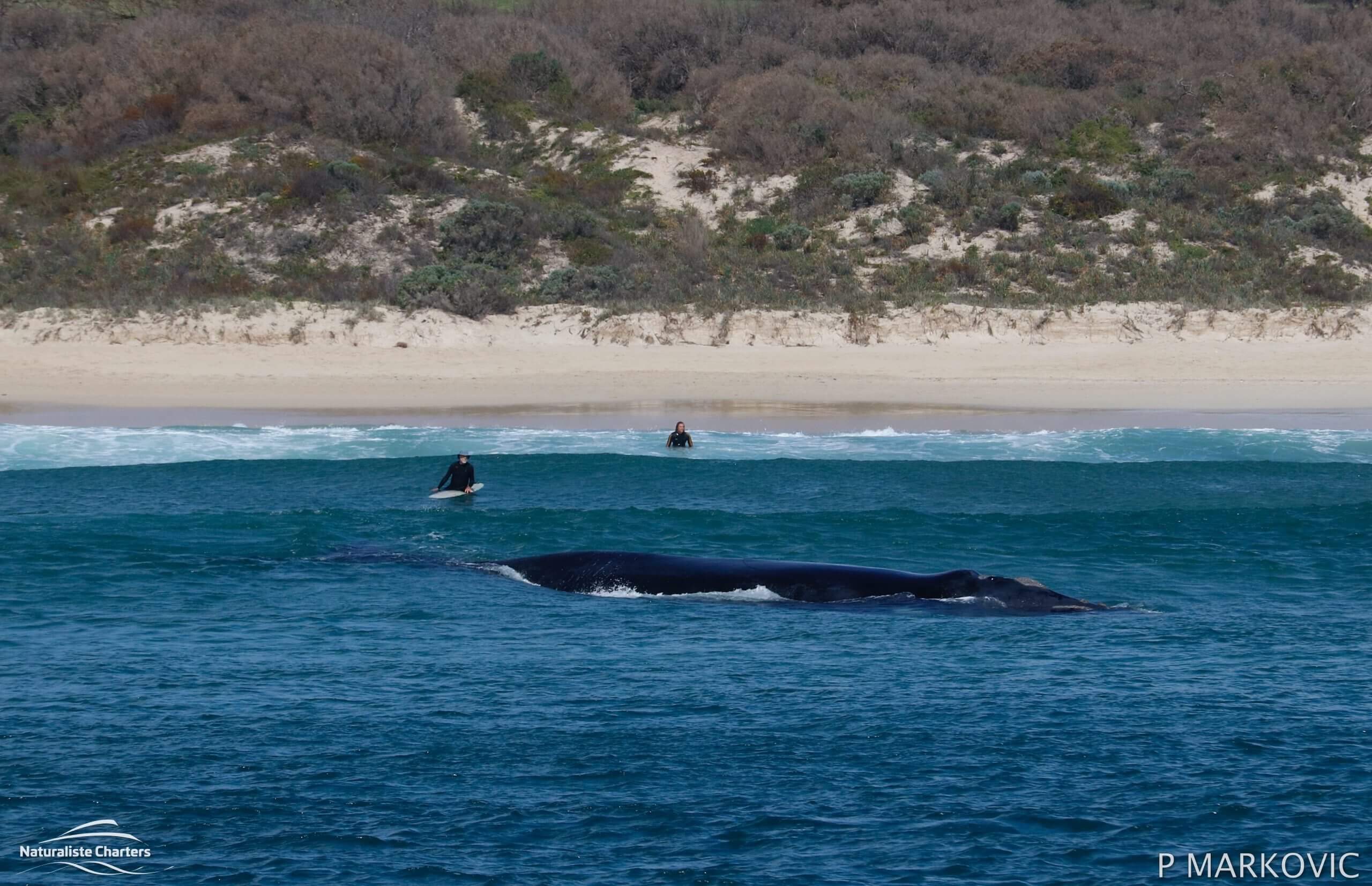
3. Singing Whales
Whales are vocal creatures which heavily rely on sound for communication. The Humpback is the only species however that will sing a song! Occurring exclusively during the breeding season, the song is made up of a complex series of sounds which gets repeated.
The song can last for up to thirty minutes and is said to entice a female whale to mate. Each male humpback will sound slightly different although the crux of the song is the same. This means that the majority of whale music we humans listen to, is humpback whales trying to get each other in the mood!
4. Sperm whales can be nursed by other females who are not the mother
Sperm whales were heavily hunted in the latter part of the 1900’s once the “easier” whales were no longer present! Whether this whale has recovered from whaling is still not fully understood and requires more data. While scientists have been observing and studying these whales they have noticed a trend among this species.
Cooperative care is where multiple individuals will look after a calf. These adoptive mothers can take on different roles which include the low energy cost of ‘casual’ baby-sitting or taking over the mothers entire role and nursing and teaching the calf.
Scientists have recently found that a close female relative can step in to ensure the calf is receiving enough care. This allocare is common for calves under one year old when they are most vulnerable. The stand-in mother is most likely to be a first relative such as grandmother or even sibling. The reason they behave like this is believed to be for mutual benefits, group benefits such as increasing size and health and to gain maternal experience.
Sperm whales are an offshore species so it is hard to study them but the more we learn about them the more we can appreciate this species.
5. Do whales fart?
To begin these fun facts was Number 1. Whale poo! We wanted to talk about the stinkier side of whales a bit more so have included the fun fact of whale farts!!!
Yes, whales do fart! Of the fourteen species of whale it can be assumed that most will pass gas. Farting is common among land mammals, and the same can be said for those that live underwater. The gas they pass can come from the oxygen they breathe and also from stomach acids which break down their foods.
Water around the fart bubbles reduces the sound while the smell is contained within! Once it hits the surface the stench is released into the surrounding air. For researchers and whale watchers they all agree that whale farts stink!
Read on for facts about whale vomit….!
6. Ear wax to tell a whale’s age
For some species of whales the ear wax is the only way to tell its age. The other option is to use their teeth but for baleen whales, they do not have any! The wax builds up in layers over time, just like growth rings of a tree. For whales it is dark coloured when they migrate and then lighter when they are in their feeding season. It gives the appearance of an old candle stick!
Whales do not have external ears which means the wax can only be sampled from deceased specimens. It is located in the ear canal and is made up from oils and fats!
One specimen was collected from a blue whale. Its waxy plug was 25 centimetres long and the whale was believed to only be 12 years old.
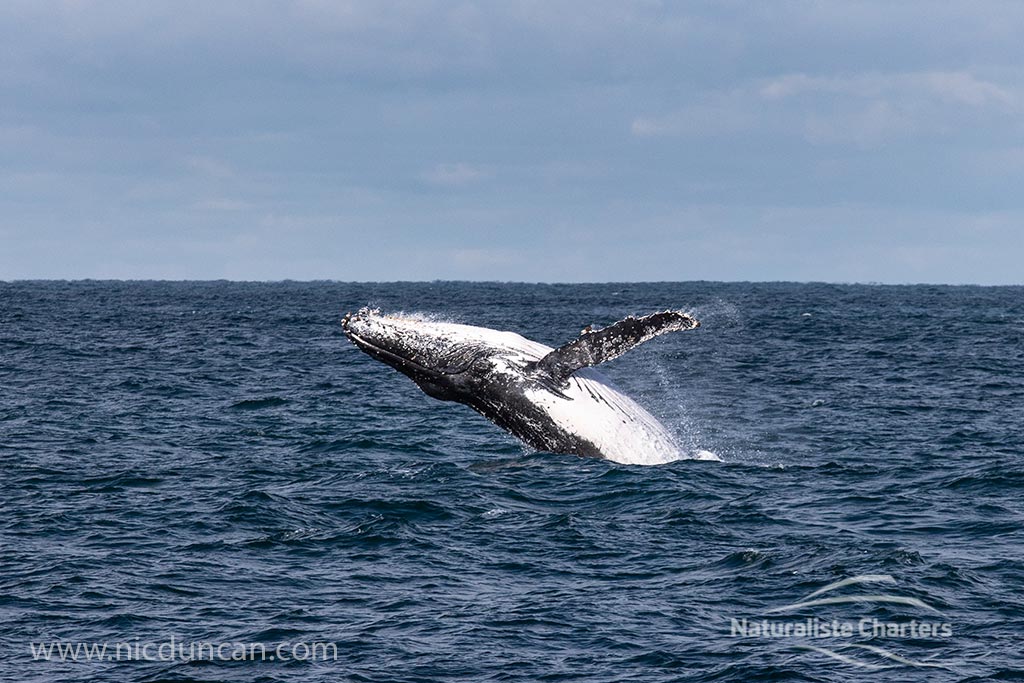
7. Perfume for the rich and famous
Whaling in the 18th century occurred for a number of resources. First and foremost, the whale blubber and oil which uses include but are not limited to, burning and therefore light! The meat was eaten or used for fishing practices, bones and teeth shaped into pretty mantle pieces plus much more. One resource taken from a particular type of whale was used as a base for perfumes. Sperm whales produce ambergris and this became a very expensive product that only the rich and famous could afford. Perfumes were built using the substance before synthetic or other natural products were used.
The ambergris would be directly extracted from the dead whale, its appearance was solid and waxy with a somewhat pleasant smell. Sometimes it would be liquidy, soft and foul smelling! This means it wasnt ready to be used yet and would need time out in the elements to harden up.
As for its actual contents… well you will be glad perfumes do not contain ambergris anymore! Sperm whales’ sole diet is squid. The beaks of a squid are a hard black substance which does not break down by the whale’s gut. The only way they can get rid of the ambergris is to vomit or poop it out! Glamorous right?!
8. Narwhals ‘unicorn’ horn. Unicorns of the sea
Narwhals are found solely in the Arctic Sea, and can be considered the unicorns of the sea due to their protruding tooth!
These whales have two teeth, in the males and some females the left front tooth will poke up and out of the animals upper lip! It then resembles a spiral unicorn horn on the top part of the whale. The tusk can grow up to 3 metres long and its purpose still remains fairly unknown.
Its potential uses include mating rituals, feeding and also navigating chemical changes in the water column. The ivory tusk is rather soft and filled with nerve endings which is unlike many other animals with tusks.
9. Hairy whales
Whales are mammals just like us humans so it is only natural for them to have hair! Not a mohawk or mullet but more like whiskers. On their rostrum (front part of the head) they have a collection of tubercles which appear as raised lumps about the size of your fist.
Extending from each of these lumps is a hair follicle and inside each lump are complex and highly sensitive nerve endings! That little whisker can detect the slightest of changes in the water, such as temperature, salinity and even pressure! This means they know how deep they are and their location! Pretty cool right?
10. Do whales have legs?
Whale ancestors once lived on land. They had legs and breathed air but as they relocated back into the ocean some features have changed. For example they still breathe air but now have an upgraded leg anatomy!
The front legs have evolved into the whale’s pectoral flippers. These fins have the same bone structure as our hands and fingers but much more elongated. The back legs have disappeared completely as the tail was used as the main source of movement through the water. Remains of the pelvis can still be found with some bones appearing to have no function for a modern whale!
Join us on a Western Australia whale watching tour for more fun and exciting facts about whales and get the opportunity to see them and experience them in the wild!

